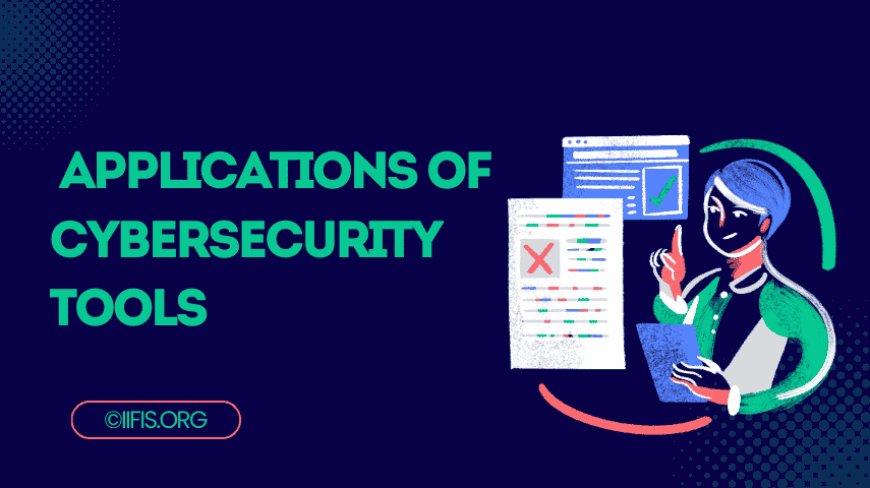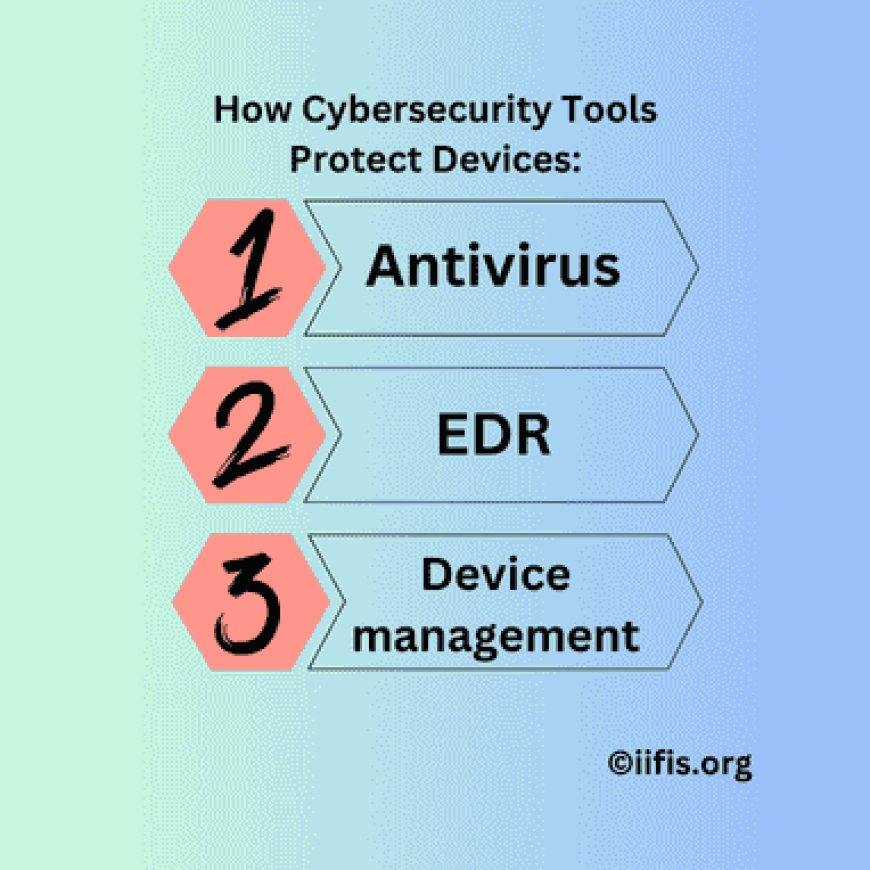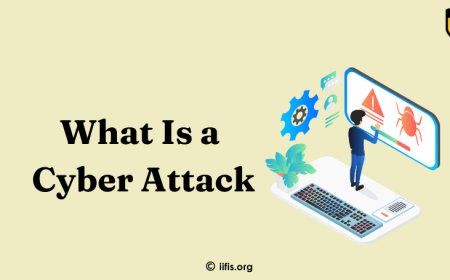Top Applications of Cybersecurity Tools
Discover the top applications of cybersecurity tools in protecting networks, securing data, and preventing cyber threats. Learn how firewalls, encryption, and more safeguard your digital assets.

As businesses and individuals increasingly rely on online platforms and cloud-based systems, the importance of cybersecurity cannot be overstated. From protecting sensitive data to ensuring the smooth operation of IT infrastructures, cybersecurity tools play a critical role in safeguarding against cyber threats. With cyber-attacks becoming more sophisticated, the need for robust, advanced security solutions has never been greater. In this blog, we’ll explore the top applications of cybersecurity tools, how they help protect businesses and individuals from a wide range of digital threats, and why investing in the right tools is essential for staying safe in an interconnected world.
Network Security: Protecting Internal and External Communications
Firewalls and Intrusion Detection/Prevention Systems (IDS/IPS) are key tools in securing network communications.
-
Firewalls act as barriers, controlling traffic between trusted internal networks and untrusted external sources, preventing unauthorized access. Next-generation firewalls (NGFW) offer deeper inspection and protection against advanced threats.
-
IDS/IPS monitor network traffic for suspicious activities. IDS detects threats, while IPS actively blocks them in real-time, securing both internal and external communications.
Securing data in transit with encryption (SSL/TLS, IPsec) and VPNs ensures that intercepted data remains unreadable. Preventing unauthorized network access is crucial, achieved through Access Control Lists (ACLs), 2FA, and network segmentation.
Popular tools like Cisco ASA, Palo Alto Networks, and Snort offer comprehensive solutions to monitor, detect, and prevent threats, ensuring safe communication across networks. Securing internal and external communications protects data integrity, ensures compliance, and prevents cyberattacks.
Endpoint Security: Protecting Devices and Users
Endpoint security focuses on protecting devices like laptops, smartphones, and tablets from cyber threats. It involves using tools like antivirus software, endpoint detection and response (EDR) systems, and device management solutions to monitor and secure these endpoints.
Key Components of Endpoint Security:
-
Antivirus Software: Detects and removes malware, including viruses, spyware, and ransomware.
-
Endpoint Detection and Response (EDR): EDR provides continuous monitoring to detect, investigate, and respond to advanced threats like ransomware and phishing attacks in real-time.
-
Device Management: Tools like Mobile Device Management (MDM) help enforce security policies, such as encryption and remote wiping, to protect data on lost or stolen devices.
How Cybersecurity Tools Protect Devices:

-
Antivirus: scans for known malware and prevents its spread.
-
EDR: detects suspicious behavior, investigates potential attacks, and enables quick responses.
-
Device management: ensures security compliance and protects against unauthorized access to corporate networks and sensitive data.
Popular Endpoint Security Tools:
-
Symantec: Offers antivirus, EDR, and advanced threat protection.
-
CrowdStrike: A leading EDR solution providing real-time monitoring and response to endpoint threats.
-
McAfee: Provides comprehensive endpoint protection with antivirus, EDR, and device management capabilities.
Identity and Access Management (IAM): Securing User Access
Identity and Access Management (IAM) controls who can access systems and data within an organization. It ensures that the right individuals have the appropriate access levels while preventing unauthorized access.
-
Multi-Factor Authentication (MFA): adds extra layers of security by requiring multiple forms of verification (e.g., password and phone authentication).
-
Single Sign-On (SSO): allows users to log in once and access multiple applications, simplifying management and improving security.
-
Privileged Access Management (PAM): restricts access to sensitive systems, ensuring only authorized users have elevated permissions.
Examples: Tools like Okta, Duo Security, and Microsoft Azure AD are widely used to enhance security by verifying user identities, managing access permissions, and reducing the risk of breaches.
Threat Intelligence: Proactively Identifying Emerging Threats
Threat intelligence involves gathering and analyzing data on global cybersecurity trends to identify emerging threats and provide actionable insights to prevent attacks.
-
How It Works: Threat intelligence tools analyze data from multiple sources, providing real-time insights into vulnerabilities, malware, and attack patterns. These tools help organizations implement proactive defense measures.
-
Importance: Real-time monitoring allows security teams to stay ahead of potential attacks, mitigating risks before they become breaches.
Examples: Popular threat intelligence platforms include Recorded Future, ThreatConnect, and FireEye, which provide insights and solutions for identifying and responding to threats in real time.
Information Security and Event Management (SIEM): Comprehensive Threat Monitoring
Information Security and Event Management (SIEM) tools collect, aggregate, and analyze security data from various sources, such as network devices, servers, applications, and databases, providing a centralized view of an organization's security posture.
Key Functions of SIEM:
-
Data Collection and Correlation: SIEM systems gather logs and event data from multiple sources, then correlate the data to identify patterns or anomalies that indicate potential threats.
-
Threat Detection: By analyzing this data, SIEM tools can detect suspicious behavior, such as unauthorized access attempts or unusual network activity.
-
Incident Response: SIEMs provide real-time alerts, enabling security teams to investigate and respond to potential incidents quickly, minimizing damage and improving response times.
Benefits:
SIEM tools enable security teams to monitor their entire network infrastructure, detect threats early, and manage security incidents efficiently by providing comprehensive visibility into the organization's security landscape.
Popular SIEM Tools:
-
Splunk: Known for its robust data analytics and real-time monitoring capabilities.
-
IBM QRadar: Offers integrated threat intelligence and automated response features.
-
ArcSight: Provides scalable, advanced correlation capabilities for threat detection and response.
These tools play a critical role in enhancing an organization's ability to detect, investigate, and respond to security threats in real time.
Cloud Security: Protecting Data in the Cloud
Cloud security tools are designed to protect data and applications in cloud environments, whether they are Infrastructure as a Service (IaaS), Platform as a Service (PaaS), or Software as a Service (SaaS). These tools provide:
-
Visibility into cloud environments to monitor access and activity.
-
Encryption to secure data both at rest and in transit.
-
Threat Monitoring to detect and respond to suspicious activities or vulnerabilities in real time.
As organizations increasingly use multi-cloud and hybrid environments, securing these complex infrastructures has become crucial. Cloud security platforms like AWS Security Hub, Microsoft Azure Security Center, and Prisma Cloud offer comprehensive tools for monitoring, compliance management, and threat detection across diverse cloud services.
Data Loss Prevention (DLP): Preventing Data Leakage
Data Loss Prevention (DLP) tools are designed to prevent sensitive data from being lost, misused, or accessed by unauthorized individuals. DLP tools monitor data in use, in motion, and at rest, applying security policies to prevent breaches.
-
How It Works: DLP tools detect and block unauthorized data transfers or leaks, both accidental and intentional, through monitoring and enforcement of predefined policies.
-
Use Cases: DLP is crucial for protecting intellectual property, financial data, and personally identifiable information (PII) from theft or unauthorized access.
Popular DLP tools like Forcepoint, Symantec DLP, and Digital Guardian provide comprehensive solutions for protecting sensitive data and ensuring compliance with security regulations.
Vulnerability Management: Identifying and Patching Weaknesses
Vulnerability management is the process of identifying, assessing, and addressing security weaknesses in systems. It is crucial for minimizing risk and preventing exploits.
-
How Tools Help: Vulnerability management tools scan systems for security flaws, prioritize risks based on severity, and assist in applying patches to fix vulnerabilities.
-
Continuous Assessment: Regular scans and updates are necessary to keep systems secure and stay ahead of potential threats.
Examples: Popular vulnerability management tools include Nessus, Qualys, and Rapid7, which provide comprehensive scanning, reporting, and remediation features.
Incident Response: Managing and Mitigating Cyber Attacks
Incident response tools help organizations detect, analyze, and respond to security incidents effectively.
-
Role of Tools: They minimize the impact of a cyberattack by quickly identifying breaches, containing threats, and facilitating recovery.
-
Automation: Automated response processes and pre-defined playbooks enable faster resolution and limit damage.
Examples: Tools like IBM Resilient, Carbon Black, and Cyber Triage streamline incident management and accelerate recovery after an attack.
Encryption Tools: Protecting Sensitive Data
Encryption tools secure sensitive data by converting it into unreadable formats, ensuring only authorized users can access it.
-
How Encryption Works: Data is encrypted both at rest (in storage) and in transit (during communication) to protect against breaches.
-
Real-World Applications: Encryption is widely used in industries like finance, healthcare, and e-commerce to secure transactions, medical records, and personal information.
Examples: Popular encryption tools include VeraCrypt, BitLocker, and AxCrypt, which provide strong encryption for files, disks, and communications.
Cybersecurity tools are crucial for protecting businesses, users, and data from various threats such as malware, data breaches, and unauthorized access. Tools like firewalls, encryption, SIEM, IAM, and DLP work together to secure different parts of an organization's systems. A multi-layered approach is essential because no single tool can address every threat, so combining these tools provides stronger and more comprehensive protection.
For organizations, including International Institutions and Financial Institutions (IIFIS), adopting a comprehensive cybersecurity strategy is vital. By leveraging the right tools, they can safeguard sensitive data, ensure regulatory compliance, and effectively detect and respond to potential threats, ultimately maintaining a secure and resilient environment.
























